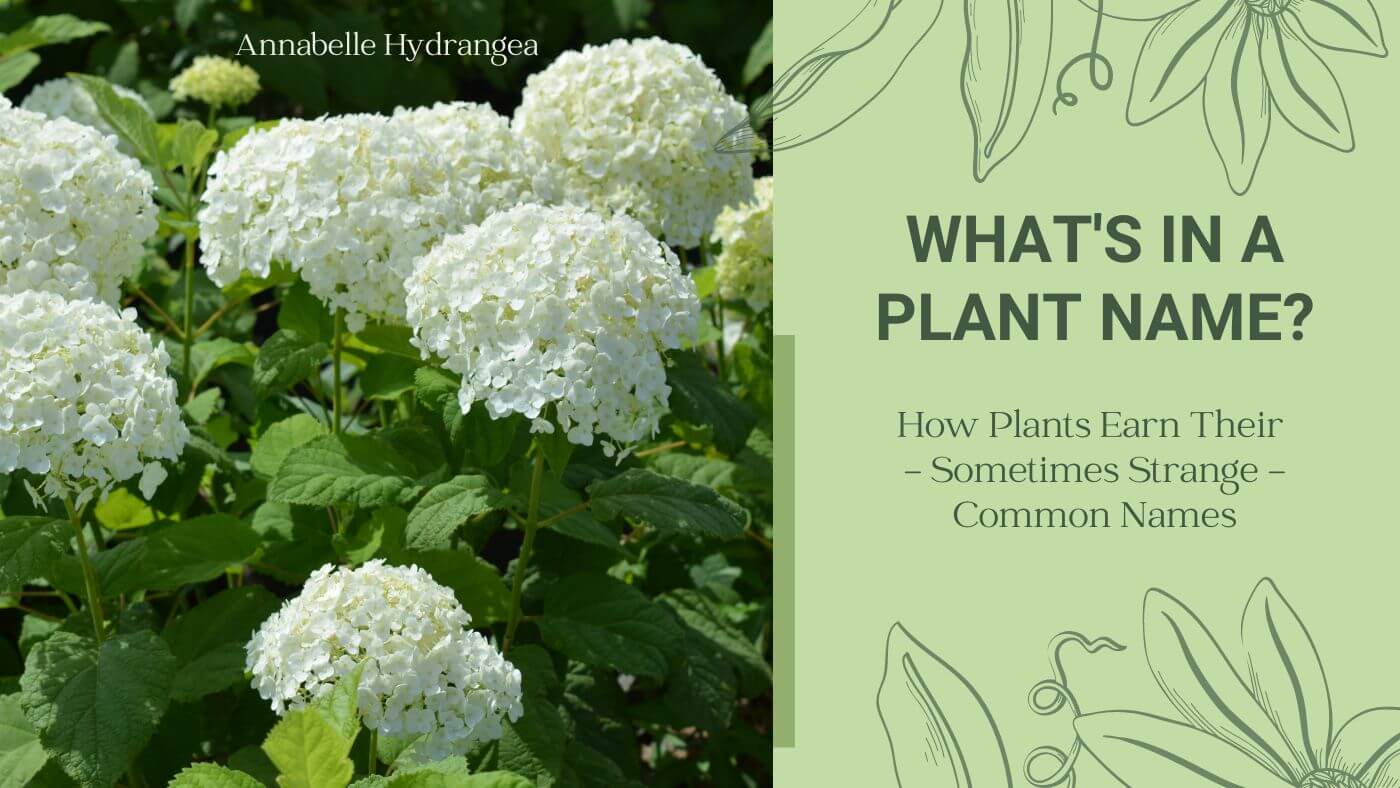What’s in a Plant's Name?
How Plants Earn Their -Sometimes Strange- Names
A Tale of Two Names: Scientific and Common
There are two names for almost every plant species, a scientific name and a common name. The scientific name follows a universal, international naming system that allows scientists and plant professionals to better communicate. It’s a binomial system based on Latin, which uses two names to identify them. Think of this as a first and last name! The first name is the genus name, and it’s always capitalized. The second name is the species name, which is always lowercase. The genus name is typically chosen based on a characteristic of the plant, for example, its general appearance, native habitat, or even who discovered it. Species names, however, are descriptive of the plant, featuring characteristics such as size, shape, or color.
Things can get interesting for plants when looking at their common names. They can be named for their function or appearance, for the people who discovered them, their region, for a dozen different reasons. Plants could even have a different common name based on where you are. Two plants can have the same common name. One plant can have multiple common names. Confused yet? We get it, it’s no walk in the park to remember all these names! Some are more memorable than others, which leads us to a few of our favorite stories about how some of our plants got their common names.

The Belles of the Town – Annabelle Hydrangea
In 1910 two gardener sisters, Harriet and Amy Kirkpatrick, from a small town in Illinois discovered a unique hydrangea they hadn’t come across before. They took several cuttings and grew them in their own gardens. Once established, they shared the unique plants with their neighbors. Unbeknown to the rest of the world, this was a new species of hydrangea. Fast forward 50 years, and a plant expert from the University of Illinois named J.C. McDaniel traveled through the town and was shocked to see this stunning white hydrangea everywhere that he’d never seen before! He asked one of the town’s residents (who just so happened to be Harriet Kirkpatrick’s daughter) if she knew where the plant originated, and she only knew that her mother had found them somewhere near the town. McDaniel took cuttings from one of her plants and a few years later they were almost ready to be marketed…all they needed was a name. It was named Annabelle to honor the sisters who found the plant, as well as where it originated, Anna, IL. Thank you to the “Belles of Anna” for discovering this beautiful and timeless hydrangea, which is one of our favorites.

Do Bees Need a Balm? - Bee Balm
A native plant that offers a stunningly complex bloom, this plant doesn’t actually attract many bees. The bee balm was named for the resin that was derived from the plant which soothes the pain of bee stings. Named for that fantastic quality, and even though it doesn’t attract many bees, it still attracts other pollinators like hummingbirds.

Butterfly Food & a Treatment for Pleurisy - Butterfly Weed
Commonly known as butterfly weed, this plant attracts its namesake, providing an essential food source for monarch butterflies in particular. It’s also known as pleurisy root, which has origins going back hundreds of years when pleurisy was a more common condition. Pleurisy is described as the inflammation of pleurae, which causes shortness of breath and pain while breathing. It can be caused by pneumonia and other infections. In the days before antibiotics, it was discovered that butterfly weed was effective at treating lung conditions such as pleurisy. It was used in official medicine in the United States Pharmacopoeia from 1820 until 1905. Thus, butterfly weed took on the secondary common name of pleurisy root.

A Useful Imposter – False Indigo
False indigo was the first subsidized agricultural crop in the United States. Before corn, wheat, tobacco, and cotton. In the 1700’s there was a blue dye shortage due to high demand and a lack of enough indigo plants (Indigofera, which grew in the West Indies) to fulfill the need. It was soon discovered in the colonies that there was a native baptisia plant whose roots could be could be processed into a lesser-quality blue dye. Because the color wasn’t as rich or pigmented as the true indigo, they decided on the name false indigo for this plant. Twenty years after sending the first shipment of false indigo to England, it was one of the largest exports out of the colonies. Although it soon dwindled due to true indigo becoming more readily available.

Pretty in Pinks - Dianthus
Also known as Dianthus, pinks are generally, well – pink. Some may mistakenly believe they were named after their flower color. They were actually named for the serrated edges on the blooms, which resemble the cut of a pinking shears. Some of us who are not well-versed in sewing might not know that pinking shears are scissors with a saw-tooth edge instead of a straight one. Many people use them to cut the edges of fabric to prevent it from fraying.
Thank you for taking this journey with us through history and plant names. In case you couldn’t tell, we’re huge plant nerds and love this kind of topic. Hopefully, we explained some of the confusion around the naming system, and provided you with, if nothing else, an interesting story to tell at a party. If you’re interested in seeing more of our blog content, click here.

